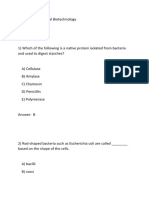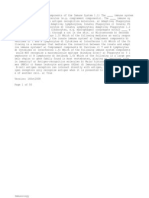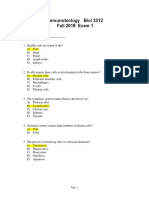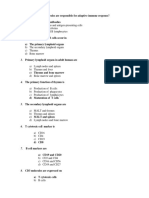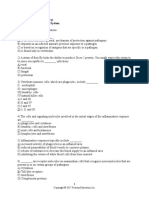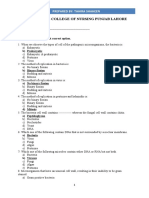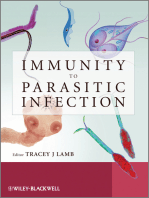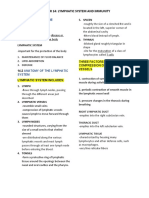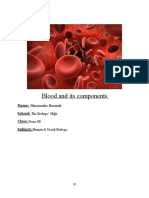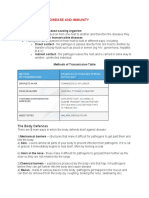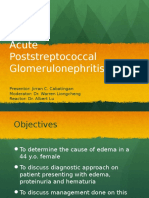1.
Which of the following is a mechanical barrier that limits the entry of microorganisms into the body? A)
Lysozyme in tears and other secretions B)
Low pH in stomach and vagina C)
Respiratory cilia D)
Defensins Answer: C) Respiratory cilia 2.
Which of the following is a cationic peptide that creates pores in microbial membranes, limiting their entry into the body? A)
Lysozyme B)
Defensins C)
Complement D)
Interferons Answer: B) Defensins 3.
Which of the following cells ingests and destroys microbes within the body? A)
Natural killer cells B)
Neutrophils C)
Macrophages D)
Dendritic cells Answer: B) Neutrophils 4.
Which of the following is an enzyme that causes hypermutation in retroviral DNA and mRNA, limiting their growth within the body? A)
Lysozyme B)
APOBEC3G C)
Defensins D)
Interferons Answer: B) APOBEC3G 5.
What is the function of lysozyme in tears and other secretions? A)
Prevent entry of microorganisms into the body B)
Degrade peptidoglycan in bacteria cell wall C)
Elevate mucus-containing trapped organisms D)
Retard growth of microbes Answer: b. Degrade peptidoglycan in bacteria cell wall 6.
Which of the following cells ingest and destroy microbes within the body?
A)
Natural killer cells B)
Neutrophils C)
Macrophages D)
All of the above Answer: d. All of the above 7.
Which of the following factors inhibits viral replication within the body? A)
Complement B)
Fever C)
Interferons D)
Defensins Answer: c. Interferons 8.
What is the function of transferrin and lactoferrin in the body? A)
Kill virus-infected cells B)
Ingest and destroy microbes C)
Inhibit viral replication D)
Sequester iron required for bacterial growth Answer: d. Sequester iron required for bacterial growth 9.
Which of the following creates pores in microbial membranes? A)
Defensins B)
Lysozyme C)
Interferons D)
Complement Answer: a. Defensins 10.
What is the function of APOBEC3G in the body? A)
Kill virus-infected cells B)
Inhibit viral replication C)
Ingest and destroy microbes D)
Create pores in microbial membranes Answer: b. Inhibit viral replication 11.
Which of the following cells occupy receptors, preventing colonization by pathogens? A)
Macrophages B)
Neutrophils C)
Natural killer cells D)
Normal flora of throat, colon, and vagina
Answer: d. Normal flora of throat, colon, and vagina 12.
What is the function of the respiratory cilia in the body? A)
Prevent entry of microorganisms into the body B)
Degrade peptidoglycan in bacteria cell wall C)
Elevate mucus-containing trapped organisms D)
Retard growth of microbes Answer: c. Elevate mucus-containing trapped organisms 13.
Which of the following cells presents antigen to helper T cells within the body? A)
Macrophages B)
Neutrophils C)
Natural killer cells D)
Respiratory cilia Answer: a. Macrophages 14.
Which of the following factors creates holes in bacterial membranes? A)
Defensins B)
Lysozyme C)
Interferons D)
Membrane attack complex of complement Answer: d. Membrane attack complex of complement 15.
What is the function of surface phagocytes in the body? A)
Prevent entry of microorganisms into the body B)
Degrade peptidoglycan in bacteria cell wall C)
Ingest and destroy microbes D)
Elevate mucus-containing trapped organisms Answer: c. Ingest and destroy microbes 16.
Which of the following factors limits the spread of microbes within the body? A)
Fever B)
Inflammatory response C)
Normal flora D)
Low pH in stomach and vagina Answer: b. Inflammatory response 17.
What is the function of complement in the body?
A)
Kill virus-infected cells B)
Ingest and destroy microbes C)
Inhibit viral replication D)
Opsonize bacteria and create holes in bacterial membranes Answer: d. Opsonize bacteria and create holes in bacterial membranes 18.
Which of the following is NOT a component of the innate immune system? A)
physical epithelial barriers B)
phagocytic leukocytes C)
B cells D)
dendritic cells Answer: c) B cells 19.
Which type of lymphocyte is responsible for killing virus-infected cells in the innate immune system? A)
natural killer (NK) cells B)
B cells C)
T cells D)
plasma cells Answer: a) natural killer (NK) cells 20.
Does innate immunity have memory? A)
Yes, it has long-term memory B)
No, it does not have memory C)
It has short-term memory D)
It has memory only for bacterial infections Answer: b) No, it does not have memory 21.
Which type of immunity is characterized by long-term memory? A)
innate immunity B)
adaptive immunity C)
both innate and adaptive immunity D)
neither innate nor adaptive immunity Answer: b) adaptive immunity 22.
What are the major functions of innate immunity? A)
killing invading microbes and activating adaptive immune processes B)
producing antibodies and memory cells C)
regulating the immune response




















